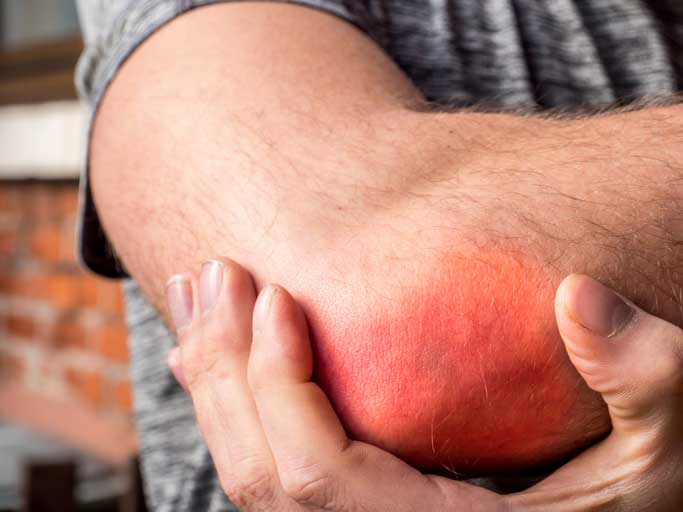03 Apr Tendonitis Causes and Treatments
Tendonitis is a prevalent ailment among those in the United States. Tendons are flexible, yet inelastic cords of strong tissue that attach muscles to bones. Due to a variety of reasons, tendons in the body can become inflamed, leading to tendonitis. While tendonitis can be caused by overuse or injury to the tendon, in most cases, the onset of tendonitis is acute. The most common areas to experience tendonitis are the elbow, shoulder, wrist, finger, and thigh. These parts of the body are so prone to tendonitis that they even have names such as tennis elbow and pitcher’s shoulder. Fortunately, there are a variety of treatments that exist to help those suffering from tendonitis.
Different types of tendonitis affect different parts of the body. For example, Achilles tendonitis occurs when the tendon between the heel and calf muscle is damaged. This can occur due to a sports injury or improperly fitting shoes. Supraspinatus tendonitis is caused when the tendon at the top of the shoulder joint becomes inflamed. Tennis or golfer’s elbow presents as pain on the outside of the elbow that may radiate downward. Tendonitis of the wrist is particularly common in people who do a lot of typing or have jobs that require repetitive use of the wrist. Anywhere in the body that a tendon exists, there is potential for tendonitis to occur.

Tendonitis has a few telltale symptoms that occur in most people. These include pain, which worsens during movement, a crackling feeling in the tendon, swelling, heat, or redness around the tendon, or potentially a lunch near the tendon. If there is an actual rupture of the tendon, certain movements that require the use of the tendon will be difficult. Once these symptoms begin, they can last anywhere from a few days to several months. The two most common causes of tendonitis are overuse of the tendon and sudden injury to the tendon. It is also more common in those who are older in age due to less flexible tendons, those who have pre-existing conditions such as diabetes and rheumatoid arthritis, and those whose jobs or sports require a significant amount of use of various tendons.
Most tendonitis treatment is aimed at reducing inflammation, which can help to reduce the pain felt. This means rest, heat and ice, over the counter pain relievers, and potentially splinting the affected joint. In some severe cases, surgery may be needed. Recently, there has been more research done on the ability of stem cell therapy to help those suffering from tendonitis. The results have been very promising, and stem cells have been shown to help repair damaged tendons.
Tendonitis is a very common ailment, especially for those who are active. While there are treatments that exist, many traditional treatments are aimed at reducing inflammation. However, stem cell therapy can be used to help repair damage in the tendons with little to no side effects. If you think you may have tendonitis, it is important to get treatment immediately as tendonitis left untreated may lead to a tendon rupture, which is much more serious.










No Comments